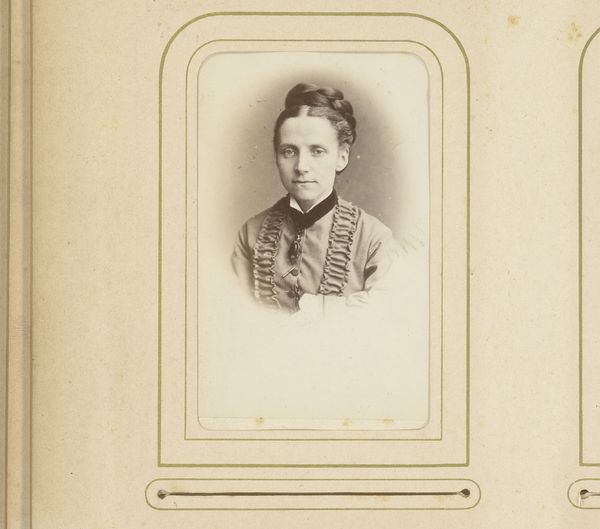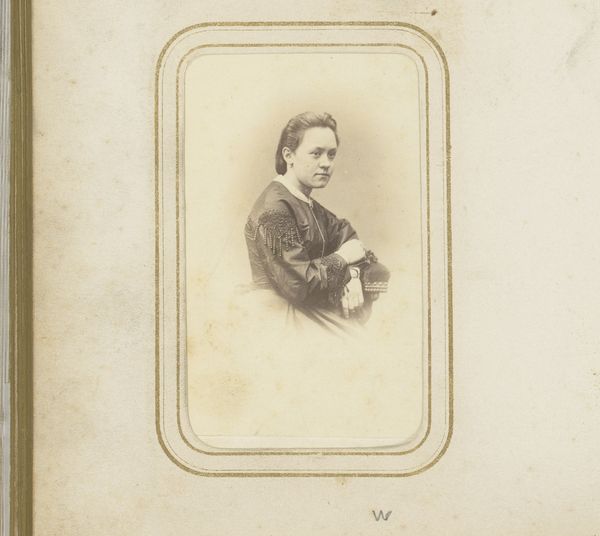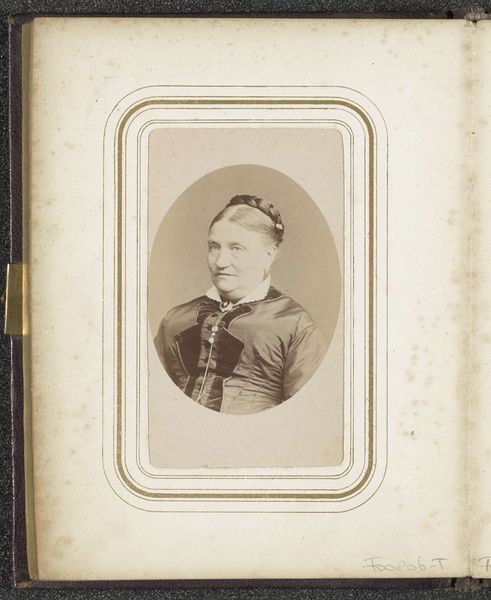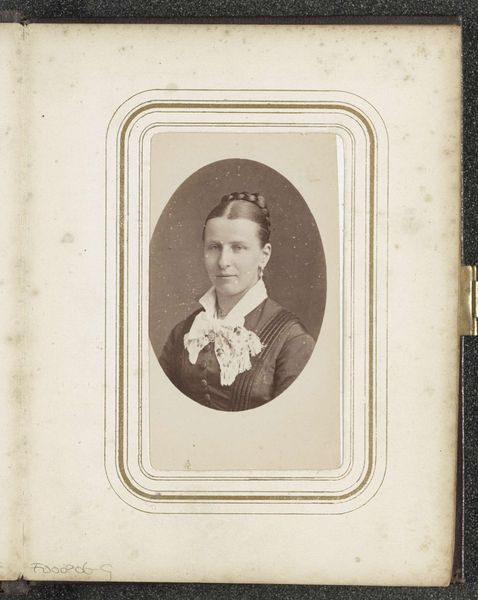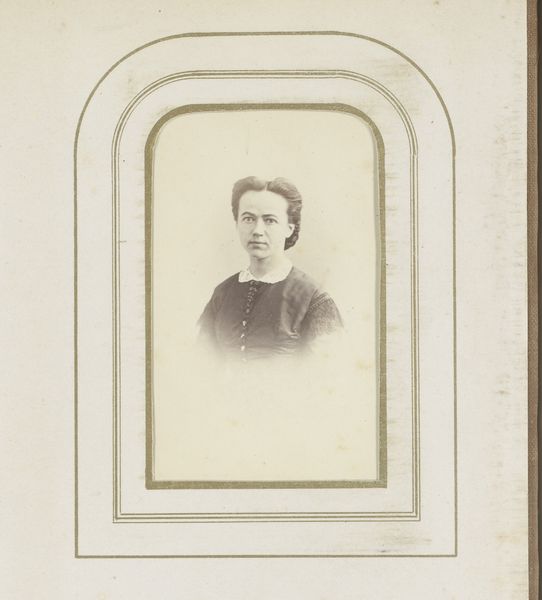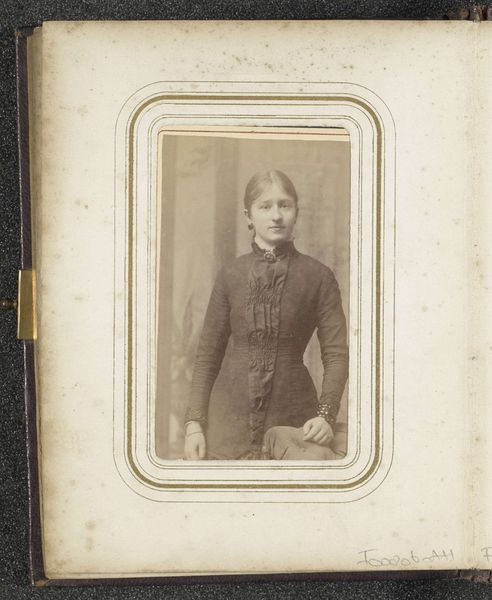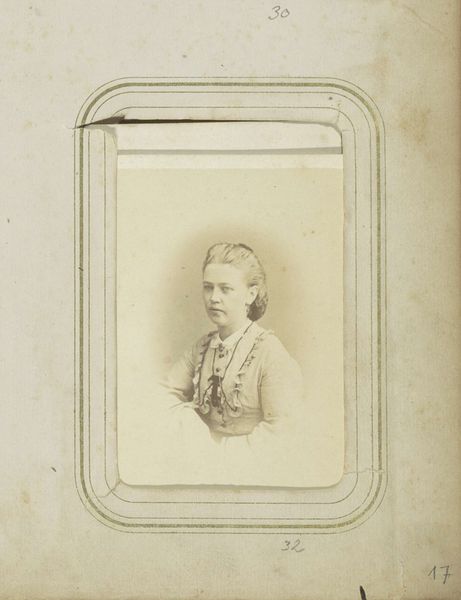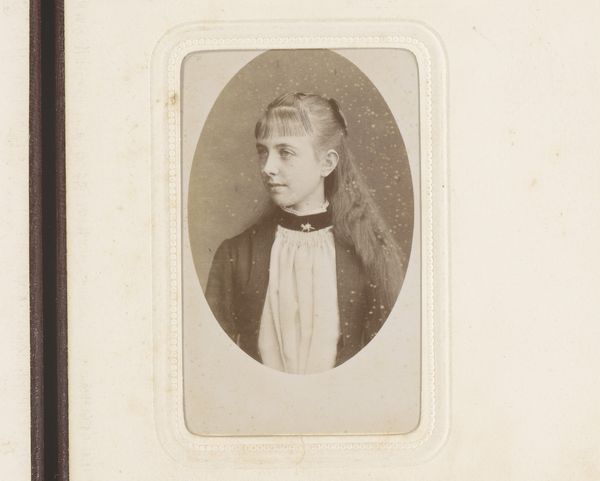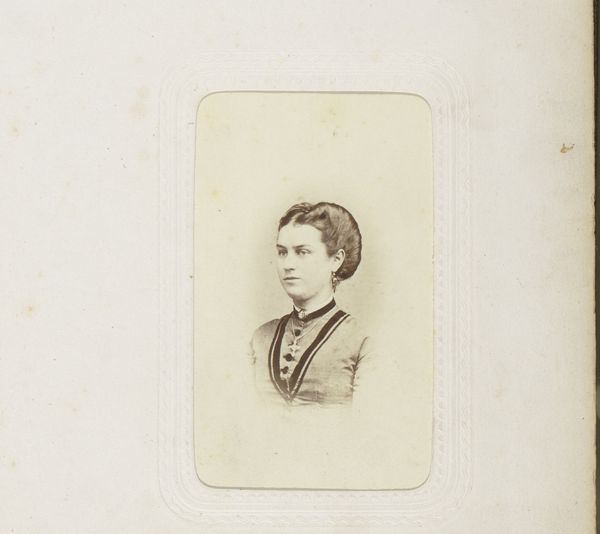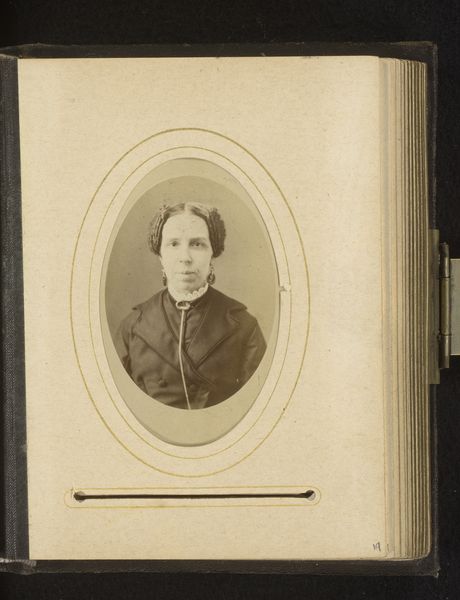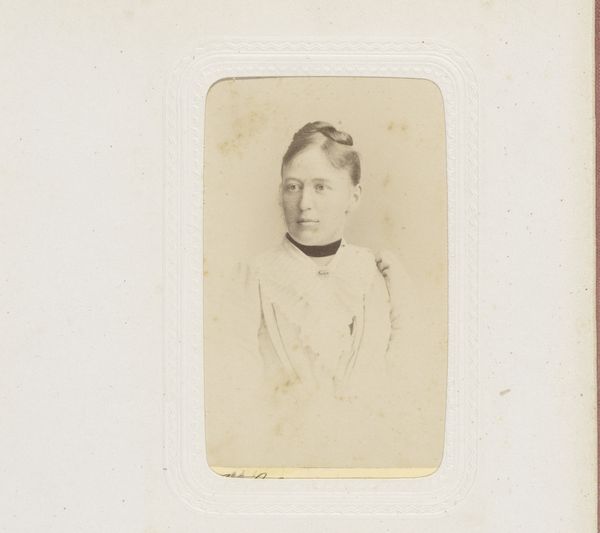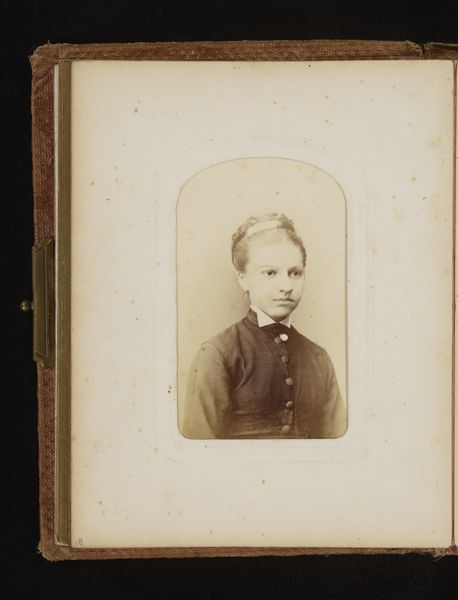
photography, gelatin-silver-print
#
portrait
#
photography
#
historical fashion
#
gelatin-silver-print
#
19th century
Dimensions: height 95 mm, width 59 mm, height 105 mm, width 63 mm
Copyright: Rijks Museum: Open Domain
Editor: This is a gelatin-silver print titled "Portret van een vrouw met een opgestoken haarvlecht", made sometime between 1868 and 1890 by Hermann Günther. It's captivating how this photographic portrait feels so immediate, even though it’s from so long ago. What can you tell me about how photographic portraits of this period were viewed? Curator: Certainly. Nineteenth-century photographic portraits played a fascinating role in constructing and solidifying social identities. Before photography, portraiture was largely limited to the wealthy. The rise of photography democratized image-making, making it accessible to a broader segment of society. So, think about it: how might the increased accessibility of portraiture shift class and gender dynamics? Editor: Well, it suggests a desire for a wider range of people to participate in constructing their own public image. Perhaps even controlling their narrative in ways they couldn't before. Curator: Precisely. These portraits provided a means for individuals, particularly women and the emerging middle class, to stake a claim on visibility and status. Examining the subject's attire, her poised yet reserved demeanor, and the formality of the backdrop suggests an attempt to project respectability and upward mobility. What impact do you think it has had on how we view individuals? Editor: I guess the act of recording changed from being an individual act into an official or publicly validated declaration? I never considered that photography could be such an impactful method in asserting status. Curator: Exactly. The circulation of these images, often within family albums or displayed in homes, contributed to the visual culture and social memory of the era, helping to define acceptable ideals. By studying these portraits, we gain valuable insight into the aspirations and self-representation of those who lived in a rapidly changing world. Editor: I see! This portrait is like a time capsule, reflecting the sitter’s desires. Thank you!
Comments
No comments
Be the first to comment and join the conversation on the ultimate creative platform.
